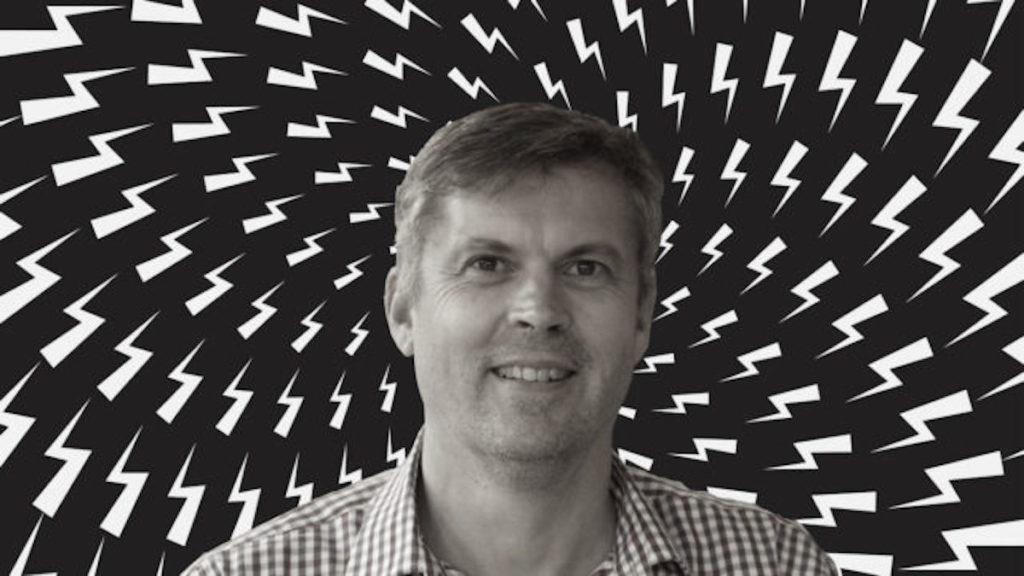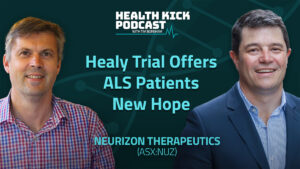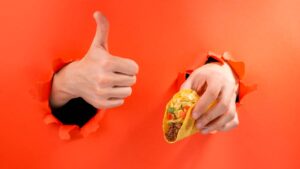Dr Boreham’s Crucible: Fisher & Paykel? It’s Kiwi for Rusmid, bro

Tim Boreham is one of Australia's best-known small-cap share analysts and business journalists.
Now for a shot at the $1 million prize – or 300,000 bags of Pineapple Lumps (and that’s a clue).
The question is: what sleep apnoea company is listed on the ASX and has thousands of employees and is valued at billions of dollars?
If you answered Resmed you wouldn’t be wrong, but the answer we were looking for is the Auckland, New Zealand based Fisher & Paykel Healthcare (ASX:FPH), which keeps a low profile – at least on this side of the ditch – relative to its $12 billion market capitalisation.
Not to be confused with the Fisher & Paykel whitegoods operation, Fisher & Paykel Healthcare manufactures products for respiratory and acute care, including continuous positive airways pressure (CPAP) pumps and masks to treat obstructive sleep apnoea.
Its products are sold in 120 countries and have been used by 20 million patients.
Most of the company’s revenues derive from devices and consumables used in hospitals for both invasive and non-invasive ventilation, nasal high flow therapy and surgery. Fisher & Paykel competes with Resmed on CPAP devices and ventilators.
The company is the global leader in respiratory humidification devices.
On a bum note, Fisher & Paykel Health is among a cohort of ‘Covid comedown’ companies that saw bumper revenues during the plague, having sold 10 years’ worth of hardware in only two years.
At Tuesday’s half-year results, CEO Lewis Gradon referred to a “normalisation of sorts” but added that conditions remained challenging because of excess inventories, absenteeism and ongoing supply chain issues.
“Customer stock levels of hospital consumables continued to reflect purchases of considerable amounts during our prior half [year], in preparation for an Omicron [Covid variant] wave hospitalisation that proved less than severe as anticipated,” he says.
Whatever the case, investors looked beyond the subdued interim numbers, pushing the stock up as much as 14 per cent on the day.
From refrigerators to respirators
Fisher & Paykel was founded in 1934 by New Zealand businessman, philanthropist and racing enthusiast Woolf Fisher, as an importer of refrigerators, washing machines and radios. The co-founder was Maurice – you guessed it – Paykel.
Four years later it signed a compact with Kelvinator and in the 1950s and moved to manufacturing its own whitegoods.
The company became involved with healthcare in the late 1960s, to tap its electronic expertise. The first device was a respiratory humidifier for hospital intensive care.
Fisher & Paykel Industries Limited listed on the New Zealand and ASX bourse in November 2001 and later became Fisher & Paykel Healthcare. The company also listed on the Nasdaq, but like many antipodean companies it discontinued it for cost reason (in February 2003).
Lewis Gradon has run the company since 2016, having been senior vice-president (products and technology) since 2001. He took over the top job from the retiring Michael Daniell, who remains a director.
Remind me what the company does
Fisher & Paykel Healthcare products fall into two broad categories: respiratory and acute care and obstructive sleep apnoea (OSA).
The former category includes single-use reusable chambers and breathing circuits and accessories. These are designed to humidify and deliver the gases that a patient receives during mechanical ventilation, non-invasive ventilation, oxygen therapy and keyhole laparoscopic surgery.
The OSA side consists of continuous positive airway pressure (CPAP) products. As with Resmed, these prevent the airways from closing during sleep, which should obviate the snoring.
The company also makes neo-natal infant warmers to maintain the bub’s normal body temperature, as well as infant resuscitators.
The company’s products include Bubble CPAP generators (with an auto leveling feature), Flexitrunk nasal CPAP interfaces and Neopuff infant resuscitators to deliver “controlled consistent and precise pressures independent of operator experience”.
Wigglewings are not attached to the Big Red Car, but are gadgets to stabilise or reposition naso-gastric tubes to infants.
In New Zealand, the company recently launched Airvo 3, which builds on the “market leading” Airvo 2, enabling targeted oxygen delivery, with an integrated battery to enable therapy while a patient moves through a hospital.
The company started selling its Evora Full OSA mask in the US in April this year, having won regulatory clearance. Promoted as being more comfortable, the mask has already been launched in NZ, Australia Europe and Canada.
The company also recently launched Optiflow Switch and Optiflow Trace, which help to administer anaesthetics.
In 2021-’22, North America accounted for 39 per cent of the company’s $NZ1.68 billion ($1.55 billion) of sales, with Europe and the Asia Pacific accounting for 28 per cent and 26 respectively.
The company’s’ sales are two-thirds skewed to hospital care, as opposed to homecare (mainly OSA masks and generators).
Most of the products are made at the company’s 51,000 square metre facility in Auckland’s East Tamaki. In August, the company paid $NZ275 million for a 105ha site in Karaka, 20km away.
The NZ capacity is supplemented by three facilities in Tijuana, Mexico. The company has leased manufacturing space in Guangzhou, China, where it has operated a sales team for many years.
Finances and performance
At a headline level Fisher & Paykel reported a 23 per cent revenue downturn in the six months to September 2022, to $NZ690.6 million.
It was a tale of two divisions, with the hospital arm (humidification and respiratory, acute and surgical care) recording a 35 per cent revenue decline to $NZ438.7 million.
But revenues from Homecare – the OSA side – climbed 10 per cent to $NZ250 million.
Gradon notes the strong initial performance of Evora Full since it was launched in the US in April.
He says while hospital revenues seemed to take a nasty tumble, they were 24 per cent higher than in the first half of 2020-’21 year: pre-pandemic, that is. The overall revenue was also $20 million higher than guided at the company’s strategy jamboree in August this year.
Higher freight costs were a key factor in the company’s earnings falling 57 per cent, to $NZ96 million. Management reports freight rates softened in the September quarter and have continued to do so into the second half.
The company’s gross margin slipped to 59.8 per cent from 63.1 per cent and is now well shy of management’s targeted 65 per cent.
The profit deterioration resulted from reduced product volumes coupled with fixed overheads costs, but management expected a 200-basis point (two percentage point) improvement in the current half.
Management has declined to offer any guidance for the full year to March 2023, citing ongoing uncertainties about Covid 19, the extent of the northern hemisphere winter influenza and the rate of hospitalisations for respiratory syncytial virus (RSV).
However, second half revenues are expected to exceed the first half run rate.
Chief finance officer Lyndal York is unfazed about the apparent deterioration in the company’s balance sheet: net debt of $NZ42.6 million compared with $221 million of net cash a year previously.
The higher gearing in part reflects the purchase of the Karaka property.
She notes the company has $NZ312 million of “available liquidity”, including $NZ70 of cash and undrawn debt. Nonetheless, the company has reactivated its dividend reinvestment plan, by which investors receive shares rather than cash dividends.
Meanwhile, the company spent $NZ84 million on research and development – 11 per cent of revenue – and expects this proportion to rise to 15 per cent this year.
Over the last 12 months, Fisher & Paykel Healthcare shares have traded between $32.30 (November last year) and $16.11 (early October this year).
The stock hit an all-time high of $34.20 in August 2020 and in 2002 traded at a low of $1.50.
stock share price today
Bouquets and brickbats
Platypus Asset Management Prasad Patkar recently praised Fisher & Paykel Healthcare for not raising prices for its respiratory products during the pandemic.
“They felt that it was not the right thing to do and absorbed the elevated costs into their own gross profit margin,” Patkar told the Australian Financial Review. “It’s a great example of a company managing its business for the long term.”
Meanwhile, broker Wilsons opines that the stock is trading on an “elevated’’ multiple of 38 times expected current year earnings, and is “unlikely to outperform until the market’s expectations have been reset appropriately”.
In case you were wondering, Resmed (the firm’s preferred stock of the two) trades on a more modest earnings multiple of 24 times, while fellow device giant Cochlear is on an earnings multiple of 26 times.
Dr Boreham’s diagnosis:
Gradon proclaims: “Our confidence in the future is unchanged, evidenced by the significant level of investment in new product development, our global sales force and our infrastructure.”
Way to go, bro!
Soaring rhetoric aside, Fisher & Paykel Healthcare’s five-year table shows the company’s revenue increasing 70 per cent to between 2018 and 2022, with net profit and earnings per share doubling. The company also has a consistent record of paying dividends.
With an emphasis on long term planning, management targets revenue to double every five to six years.
But where will this growth come from?
York describes the market for existing products as a $NZ25 billion opportunity, with high barriers to entry.
Priority growth areas are home respiratory and surgical technology, including nasal high-flow anaesthesia products.
But changing clinical practice is a “slow process that never stops” she told a recent investment forum.
“After harnessing clinical evidence, the clinicians then have to be persuaded to buy the equipment and use it routinely on patients.”
Evidently a member of the glass-half-full camp, York says the pandemic continues to deliver benefits even as it fades into history (although the locked down and restless the Chinese populace might argue with that premise).
“Covid has accelerated our placement of hardware and given us a wonderful opportunity to advance our long-term plans,” she says.
This column first appeared in Biotech Daily
Disclosure: Dr Boreham is not a qualified medical practitioner and does not possess a doctorate of any sort. His idea of long-term planning is to sort out what he’s having for dinner by mid afternoon
UNLOCK INSIGHTS
Discover the untold stories of emerging ASX stocks.
Daily news and expert analysis, it's free to subscribe.
By proceeding, you confirm you understand that we handle personal information in accordance with our Privacy Policy.








